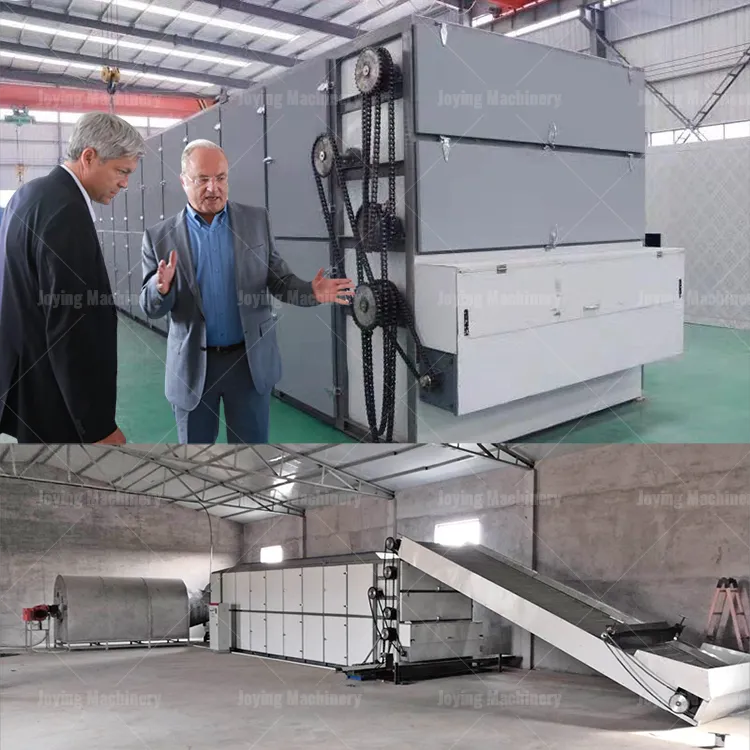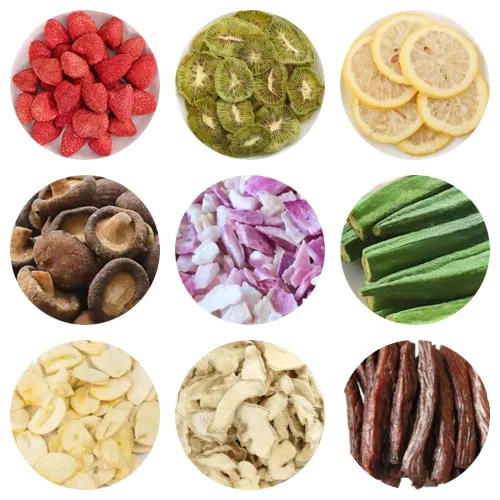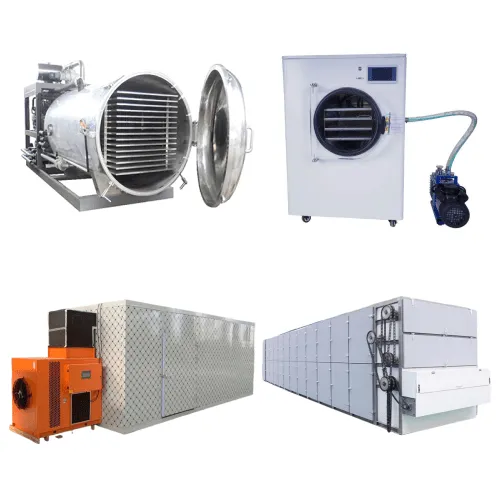
When it comes to drying large quantities of agricultural products like fruits, vegetables, and herbs, choosing the right drying method can make or break the process. Among the many options available, belt dryers stand out as a reliable and efficient solution. But what specifically makes them better than other drying methods like freeze-drying, tray drying, or sun drying?
Belt dryers offer advantages such as high efficiency, uniform drying, a continuous operation process, and suitability for a wide range of crops. Unlike other methods, they provide consistent results while reducing labor and operational costs, making them an ideal choice for commercial-scale drying.
In this article, we’ll explore the key benefits of belt dryers and compare them with other commonly used drying methods. By the end, you’ll have a clear understanding of why many industries favor belt dryers for their drying needs.
1. Uniform and Consistent Drying
One of the biggest challenges in drying is achieving uniform results. Uneven drying can lead to poor product quality, spoilage, and wasted resources. Belt dryers excel in this area by ensuring consistent drying across all materials.
Belt dryers use a combination of controlled heat and airflow, along with a conveyor belt system, to provide even drying. The multi-layer design allows materials to be exposed to consistent conditions throughout the process.
Imagine drying fruit slices in the sun or on trays. Some pieces may dry too quickly, becoming brittle, while others stay moist, risking mold growth. Belt dryers eliminate this issue by carefully regulating temperature and airflow, ensuring every piece is dried to the same level. This is especially important for commercial operations, where maintaining uniform quality is critical.
2. Continuous Operation for Higher Efficiency
Unlike batch drying methods like tray drying, which require frequent manual intervention, belt dryers operate continuously. This makes them significantly more efficient for large-scale drying needs.
With belt dryers, materials are loaded onto the conveyor belt and move through the drying chamber automatically. The continuous process reduces downtime, increases throughput, and allows for better resource utilization.
Think of it as a production line where raw materials enter one end and perfectly dried products come out the other. This seamless operation minimizes labor requirements and maximizes productivity, making belt dryers ideal for food processing factories and large-scale agricultural operations.
3. Energy Efficiency and Cost-Effectiveness
Energy consumption is a major consideration when comparing drying methods, especially for industrial-scale applications. Belt dryers are designed to optimize energy use, making them more cost-effective over time.
The closed system of a belt dryer minimizes heat loss, while features like insulation and precise temperature controls ensure efficient energy use. Additionally, many belt dryers can be powered by renewable energy sources like biomass or solar-heated air.
For example, compared to freeze-drying, which requires significant energy to maintain sub-zero temperatures and vacuum conditions, belt dryers operate at moderate temperatures, consuming far less energy. This not only reduces operational costs but also makes belt dryers a more sustainable option.
4. Versatility for a Wide Range of Materials
Different drying methods often cater to specific types of products. For instance, sun drying is mostly limited to small-scale operations, while freeze-drying is typically used for premium or delicate items. Belt dryers, on the other hand, are versatile enough to handle a wide range of materials.
Belt dryers can process fruits, vegetables, herbs, grains, and even non-food items like biomass or chemicals. They are particularly effective for products that require gentle handling and precise control over moisture levels.
This adaptability makes belt dryers a one-size-fits-all solution for industries dealing with diverse materials. Whether you’re drying leafy greens, mango slices, or root vegetables, a belt dryer can handle the job with ease.
5. Better Nutritional and Flavor Retention
Maintaining the nutritional value and flavor of food products is essential, especially in industries like health foods and organic produce. Belt dryers are designed to preserve these qualities better than many other methods.
By operating at controlled, moderate temperatures, belt dryers minimize nutrient loss and prevent overheating. This ensures that the dried products retain their natural flavor, color, and nutritional content.
For instance, sun drying, while natural, exposes materials to uncontrolled heat and contaminants, often resulting in a loss of nutrients and inconsistent taste. Freeze-drying, although excellent at retaining nutrients, is far more expensive. Belt dryers strike a balance, offering high-quality results at a fraction of the cost.
6. Reduced Labor and Automation Potential
Labor-intensive drying methods like tray drying or sun drying require constant supervision, flipping, and rearranging of materials to ensure even drying. This adds to operational costs and increases the risk of human error. Belt dryers, on the other hand, are highly automated.
Once the materials are loaded onto the conveyor belt, the drying process is fully automated. Operators can monitor and control the process using a centralized control panel, reducing labor requirements significantly.
This automation also makes it easier to scale operations. Whether you’re processing a few tons or hundreds of tons of products, a belt dryer can handle the workload with minimal human intervention.
7. Hygienic and Contamination-Free Drying
In food processing, hygiene is non-negotiable. Methods like sun drying expose materials to dust, insects, and other contaminants, while manual handling in tray drying increases the risk of contamination. Belt dryers provide a controlled, closed environment that ensures hygienic drying.
The enclosed design of a belt dryer prevents external contaminants from entering the drying chamber. Additionally, the use of food-grade materials and automated handling reduces the risk of contamination.
This makes belt dryers particularly suitable for industries that require strict adherence to food safety standards, such as organic food producers or exporters.
8. Scalability for Industrial Applications
While traditional drying methods like sun drying or tray drying are effective for small-scale operations, they struggle to meet the demands of large-scale production. Belt dryers are designed with scalability in mind.
Multi-layer belt dryers, in particular, can handle high volumes of material without compromising on quality. Their modular design allows for easy expansion, enabling businesses to scale up as needed.
For instance, a food processing factory drying several tons of mangoes daily would find it nearly impossible to rely on traditional methods. A belt dryer, however, can handle the workload efficiently, making it an indispensable tool for commercial operations.
Conclusion
Belt dryers offer a range of advantages over other drying methods, including uniform drying, continuous operation, energy efficiency, and versatility. They are particularly well-suited for large-scale, industrial applications where consistency, speed, and quality are essential. While traditional methods like sun drying or freeze-drying have their place, belt dryers provide a balanced solution that combines efficiency, cost-effectiveness, and high-quality results. If you’re looking for a reliable drying method for your agricultural or food processing needs, a belt dryer is undoubtedly worth considering.



